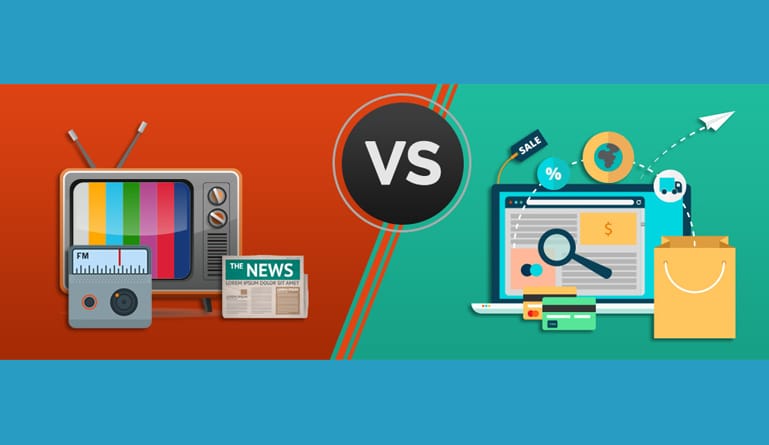No matter what method of media you use, here are some of the best ways to brand your business.
When it comes to traditional media versus new media, is there one that is better for your business?
When it comes to branding and marketing your business, you have a few options. There is “traditional media and marketing” and “new media.” Traditional media might make you think of Mad Men era newspaper publishing, while new media might sound vague and confusing. Some marketers might pose these strategies against each other, trying to decide which has better merits and mores success in traditional media vs. new media. There are, however, advantages to both, and most businesses can benefit from using a mix of traditional and new media tactics.
Relationship Between Traditional Media and New Media
Traditional marketing methods aren’t necessarily “old media.” It only refers to traditional advertising strategies, like print ads, billboards, newspaper advertorials, television and radio, and direct mail. New media is advertising just the same – reaching out to people through messing that includes words and pictures. The real difference between the two is where new media appears. Most new media is online, in the comparatively newer digital spaces of blogs, social media, digital banners, and Google ads.
More and more companies are asking what the best way to get their customers’ attention is, new or traditional media? But there are benefits to both, depending on both what kind of business you have and what your goals are.
Examples of Ways to Use Traditional and New Media
Traditional and digital marketing can both have a place in your marketing efforts. Here are some of the most effective ways to reach the most people with either conventional marketing or digital marketing methods.
New Media
Blogs: Blogs allow businesses to be more than just a product or service, but to create a relationship with their client base and help them solve problems and give them extra resources.
Social Media: Social media lets you target your audience with very specific parameters, so you know your ads are reaching the people who likely have the highest interest in or need for your product. This is one tried and true method of increasing revenue and market awareness.
Traditional Media
Print ads: While newspapers and magazines may not be as popular, there are niche publications that are still thriving and have a regular audience. Advertising yourself in the pages of a well-read publication is still a great way to help grow your brand awareness.
Direct mail: While direct mail is sometimes called “junk mail,” it’s surprisingly effective for some businesses, especially if you can include a discount on a product or a catalog of products. Think about how popular Ikea catalogs are!
The truth is that most target audiences don’t consume their media exclusively through one channel or another, so there is no winner in traditional media vs. new media when asking, “Which one is better for marketing my brand?” Even if a customer doesn’t have cable and never sees a commercial, they probably passively consume advertising on billboards when driving to work.
Older audience bases might not have a lot of interest in browsing the internet where they’d be exposed to digital banners, but they still might check up with their grandkids on Facebook or listen to a podcast someone recommended. That’s why when it comes to branding your business – either to find new talent, to get new customers, or just increase your reputation in the market – your business should make sure to utilize both traditional marketing strategies and new media advertising.





